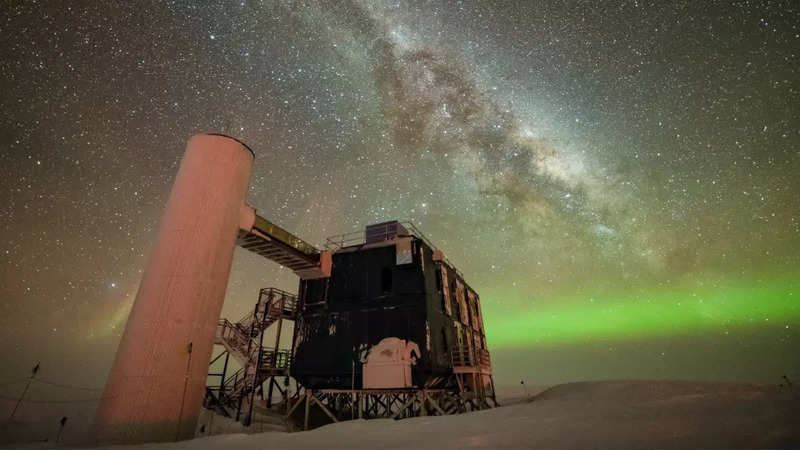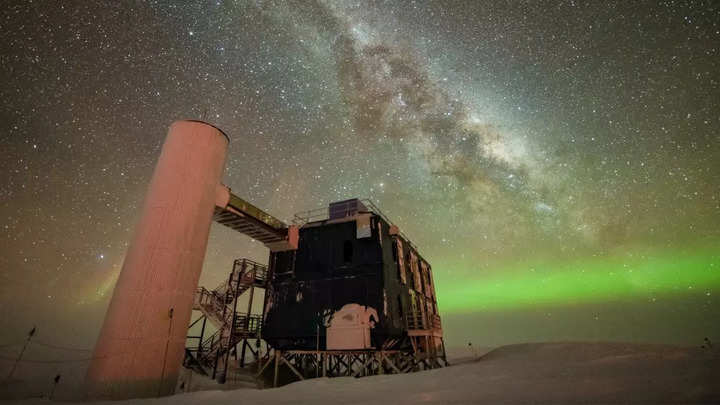

In a first, astronomers have captured a portrait of the Milky Way galaxy showing high-energy neutrinos coming from within the galaxy, a new study has reported. The neutrinos, commonly known as cosmic “ghost particles”, have been detected by a telescope embedded in Antarctica’s ice.
The development is an important milestone as it potentially opens up a new window of research. According to a paper published in the journal Science, scientists used the IceCube Neutrino Observatory at the Amundsen-Scott South Pole Station.
It is embedded within a gigaton (1 billion tons) of ice, which makes it the first gigaton neutrino detector ever built.
Read Also

Why are neutrinos called “ghost particles“
Neutrinos got their name because these tiny, high-energy cosmic particles are extremely vaporous and have almost no mass. They can pass through any kind of matter or environments, such as stars, planets and entire galaxies, without changing their structure.
While high-energy neutrinos are known to originate from galaxies beyond the Milky Way, researchers have long suspected that our own galaxy is a source as well.
Astronomers have previously captured the images of our galaxy through electromagnetic radiation from visible light or radio waves. However, instead of energy, this new perspective of our galaxy is based on particles of matter.
Read Also

“I remember saying, ‘At this point in human history, we’re the first ones to see our galaxy in anything other than light,’” said study co-author Naoko Kurahashi Neilson, who is an associate professor of physics at Drexel University.
The research team focused on the plane of the Milky Way, which is the dense region of the galaxy that lies along the Milky Way’s equator. Scientists studied 10 years of IceCube data and analysed 60,000 neutrinos — 30 times more than prior neutrino scans.
The findings suggest that the newfound neutrinos come from our galaxy but IceCube currently is not sensitive enough to pinpoint their sources.
FacebookTwitterLinkedin
end of article